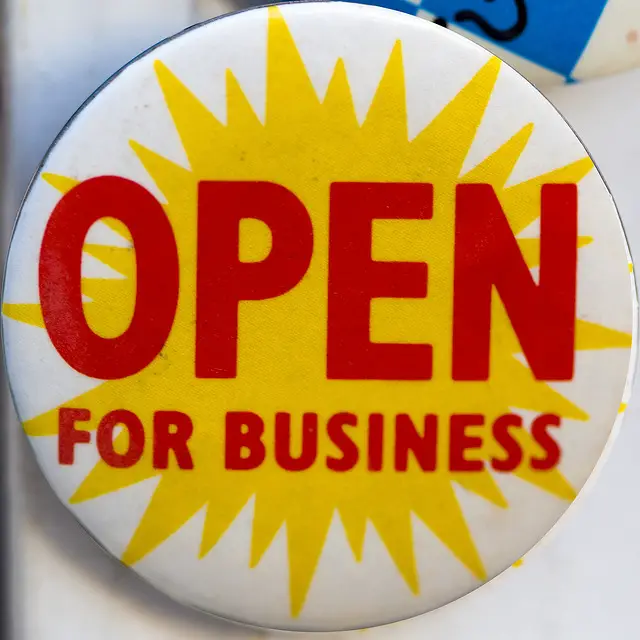 As a business owner, you are constantly on the lookout for ways to increase the profitability of your enterprise. After all, the reason you started a business in the first place was to make money and you certainly don’t want to take any actions that will negatively impact that goal.
As a business owner, you are constantly on the lookout for ways to increase the profitability of your enterprise. After all, the reason you started a business in the first place was to make money and you certainly don’t want to take any actions that will negatively impact that goal.
Considering the purchase of business assets for their company is a challenge; at times you’ll need to make a substantial financial outlay in order to maintain or expand your business — otherwise the company will eventually wither and die.
While there’s no guarantee that your business purchases will turn out to be beneficial for your company, it’s important to be reasonably sure that you’ll achieve a high return on your investment (ROI). Here are some tips that may help you make the right decision when buying business assets:
Understand the Needs of Your Business
The most important factor to examine is the specific need or situation that’s causing you to consider making a purchase for your business. You want to be able to justify any financial investment with some hard facts regarding the advantages that your company will accrue from your acquisition. In order to accomplish this, you need to fully understand your business and how the purchase can increase its profitability.
If the purchase helps you become more competitive or offer a better product or service, then the purchase probably makes sense. If you’re just buying so you can keep up with the latest technology, your purchase may be misguided.
Take a catering company as an example. To expand that type of business, you might be interested in purchasing new trucks for sale or food trailers. Based on your projected use of the new equipment, this is a valid purchase and will afford you a high ROI over the life of the vehicle.
Consider Used Equipment
You might have visions of a shiny new piece of equipment for your company — but buying used equipment can save a substantial amount of money that can be spent on other areas of your business. According to loebequipment.com, here are some pointers to keep in mind when going the used route:
- See if the used equipment company is operated under a different name or in a different location; this is a warning flag of potential issues in the past.
- Review warranties and return policies.
- Ensure that the equipment was test-run by their mechanics before shipment.
Conduct Extensive Research
Performing research to determine the specific equipment modes that will satisfy your requirements is a critical step when making business purchases. You can consult industry newsletters to find out what other businesses in your industry have found to be useful when upgrading their facilities.
Once you’ve identified the component that you feel is a perfect fit for your operation, dive deeper into reviews and customer testimonials regarding that product. You may find that other businesses have found an issue with the equipment that escaped your initial review and be steered toward another option. It’s better to find out about any problems before the purchase is completed.
Insist on Quality Over Price
Don’t be blinded by the allure of low prices. You’re looking to maximize your ROI, not necessarily finding the least expensive option. So consider the overall quality of the equipment that you’re purchasing.
Going the economical route may make sense in some cases, but you also may end up spending far more on maintenance and upkeep of a less expensive and lower quality asset, and that will negatively impact your ROI.
Investigate Leasing Your Equipment
There are situations where leasing may make more sense than buying your equipment outright. According to nationalfunding.com, here are the pros and cons of both options:
- Buying – Purchasing can be less expensive than leasing over the long-term; plus you own the equipment. On the flip side, the initial cost can drain your resources and you may have to try to sell the item once it has outlived its usefulness.
- Leasing – The positive aspect of leasing includes lower upfront costs that can save your company’s resources. Maintenance and repairs are usually performed by the leasing company which also saves you money. However, you may have to pay more over the life of the equipment and you’re responsible for the full cost of the lease even if your operational requirements change.
Take Advantage of Tax Incentives
There are federal and state tax incentives that you can take advantage of when purchasing equipment. These savings will help lower the cost of your investment and increase your ROI. Your main option is to expense the equipment when it is purchased or depreciate it over the item’s lifetime.
Combine Purchases to Reduce Costs
Look for opportunities where you can reduce the cost of buying equipment by making multiple purchases from the same provider. If you’re in a situation where you’re considering several purchases, it’s worth your time to see if they can be satisfied by a single vendor. This tactic can lead to substantial savings and allow you to build a relationship with that manufacturer.
One of these tactics is sure to fit your situation and help you achieve a high ROI on your investment. Use the method that makes the most sense for your company, and the particular purchasing decision you are facing at the time.
Photo Credit: Mark Morgan

Question of the Week